Automation for Confluence
Automation is a functionality that we were already used to in Jira, and that we can now take advantage of in Confluence as well. From now on, administrators can create and enable automation rules that serve, among other things, to automate repetitive tasks that are normally performed manually.
Automation for Confluence is only available for Confluence Premium Cloud licenses. If you have the Premium license, the Automation section can be found at the space level in Space Settings and globally in administration settings, Global>Automation section.
If you do not have experience or knowledge of automation in Confluence, you can see several examples in the Library, and try the one that best suits your needs:
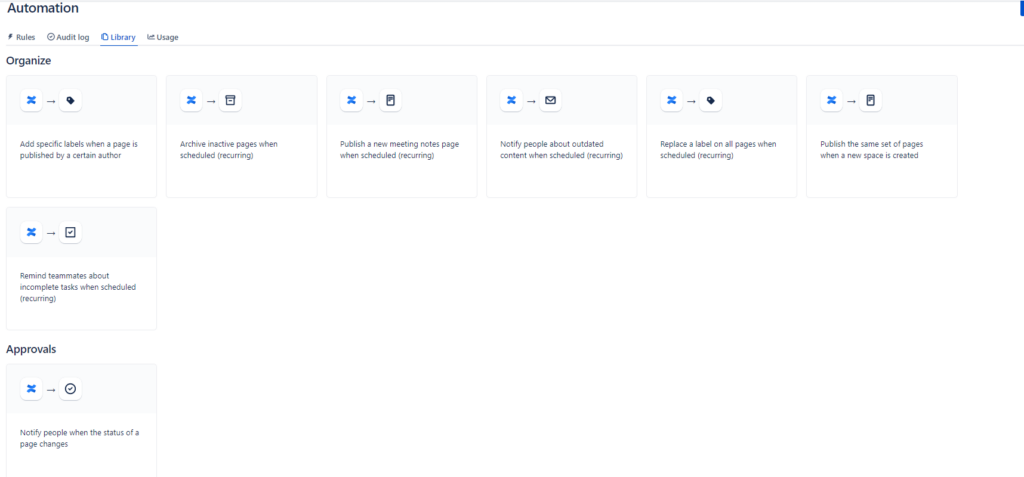
Features
Exactly like Automation for Jira, it includes the following components:
- Triggers: These are the triggers that execute the rules (for example, the rule is executed when a page is published).
- Conditions: The conditions that the rule must meet to proceed to the next action (for example, that a certain user is the one who published the page
- Branches: It will allow us to move through other elements different from the one that triggered the action and apply actions to those elements (for example for each page created more than a month ago
- Actions: The actions are executed if the conditions are met (if any) and depending on the order that has been established in the rule (for example Add tags, copy pages, send emails)
When an automation is going to be created from scratch, it gives us a choice between the following triggers:
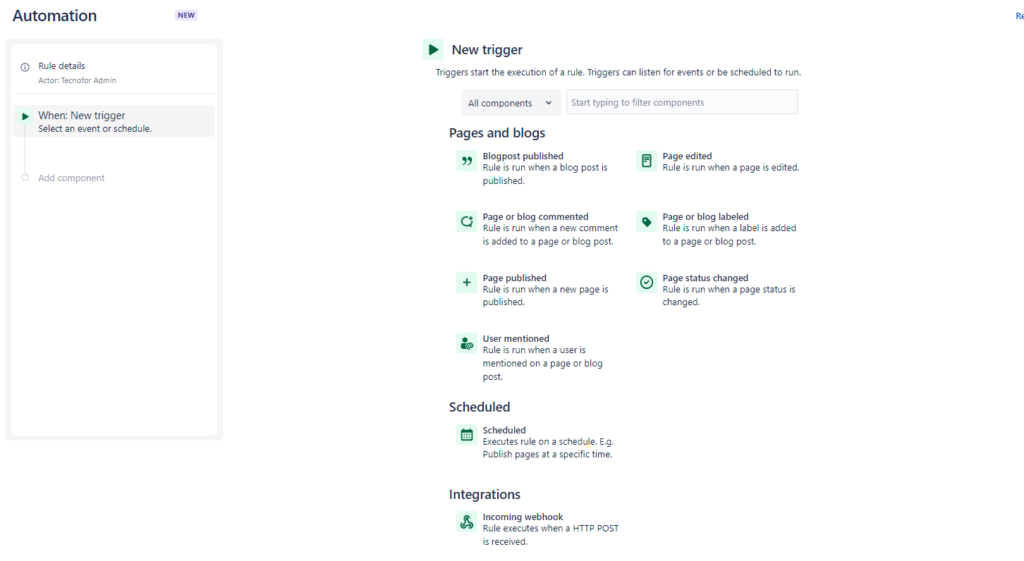
As we can see, there are some triggers that can be interesting, such as “Space created” that is triggered when a space is created in Confluence. This particular trigger is only available on global automations.
With this trigger you can make a rule that creates new pages with certain templates when a space is created:
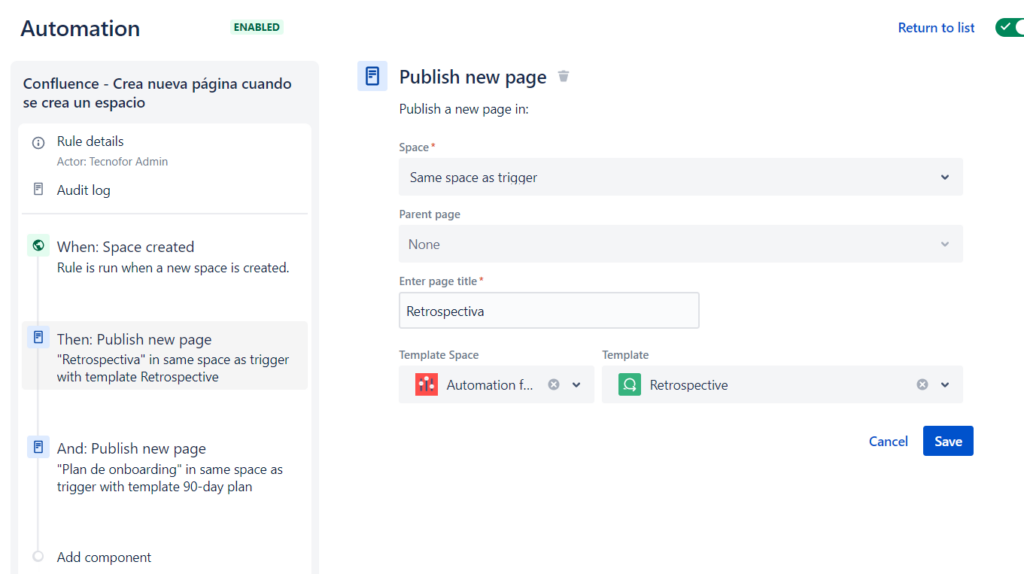
This would greatly facilitate the creation of spaces with a common structure, easily maintainable for the teams.
You can also make a rule that fires every seven days and publishes a meeting page for example:
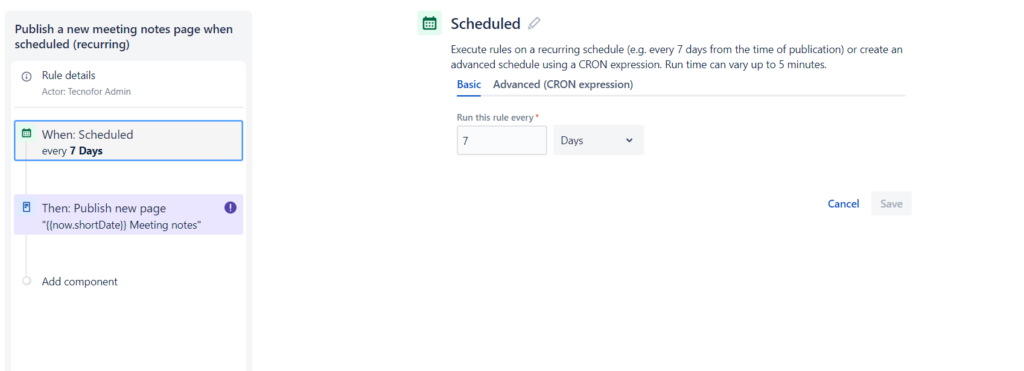
These are just some examples that allow automation for Confluence although we do not have a wide variety of actions available, at the moment, we have an action where we can send HTTP requests to a url, be it Jira, Confluence or another tool. This opens more possibilities to further customize the rules by REST API and create, for example, issues in Jira with data from a Confluence page or obtain the data from the fields of an issue and publish it on a Confluence page:
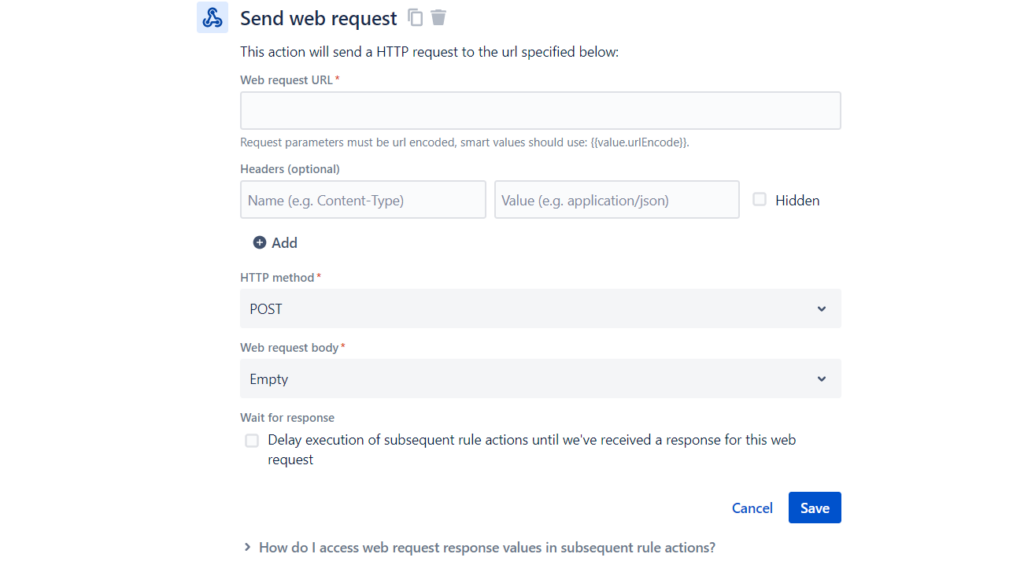
To get even more out of it, you can use Smart values, which are dynamic variables built with a specific syntax and that allow you to extract values from some elements. They can be added at various locations on the rule.
For example: {{page.title}} which extracts the title of the page, {{space.name}} the name of the space.
Limitations
In addition to being an exclusive feature of the Premium license, it has some limitations that must be considered before starting to use Automation for Confluence.
- It is not easy to edit already created pages because there is no preconfigured action that allows it. It forces us to use the send web request action to be able to perform those actions via REST APIs.
- Limited Smart values, there is very little variety to extract the most relevant information, which is usually the content of the pages.
- There is little variety in the conditions. There are only three types, one to check the user, another to put a CQL and the last more advanced one where you can add smart values so it has a certain degree of complexity.
- Few actions that add value to the rule. Most of the actions that can be executed are very simple and do not give many customization options, except for the Api REST request action.
Conclusions
Drawing a general conclusion, we can say that it will be a great tool to automate repetitive tasks when you have more options in the components.
Currently, technical knowledge is required to perform actions that can be done through REST APIs but do not have them implemented.
It may be possible to use it if Confluence is used a lot but it is not easy to adapt the rule to very specific needs that do not come preset.
However, it is very nice to be able to create pages with templates when a space is created or to be able to have a rule run every few days.
Perhaps in the future they will implement more triggers, actions, and conditions that allow more actions to be performed without resorting to an Api Rest request, as is currently the case with Automation for Jira, which is more simplified. So, we can say that Automation for Confluence is essential to automate and improve the documentation process in our company.